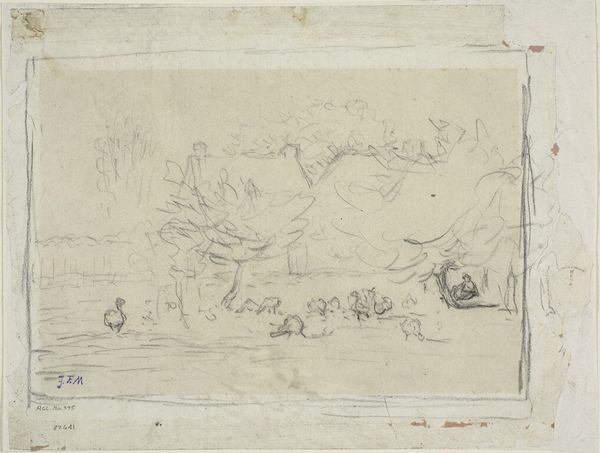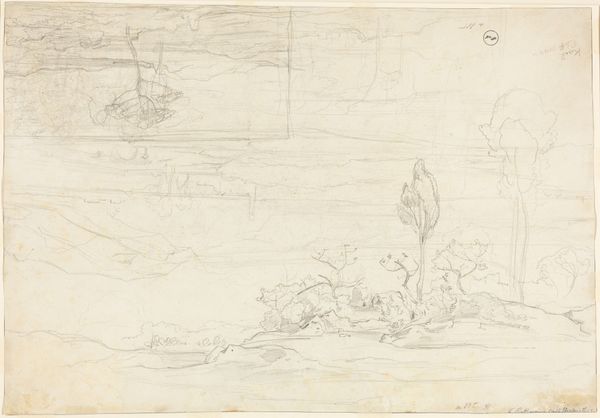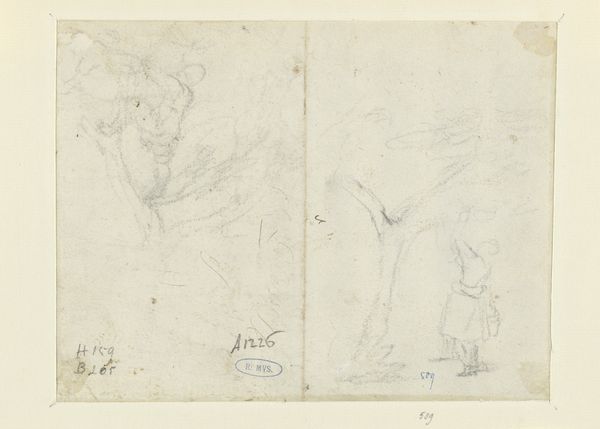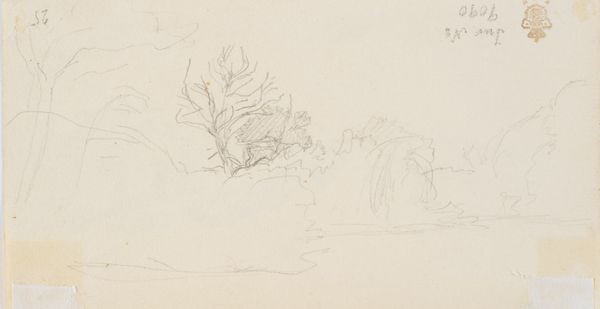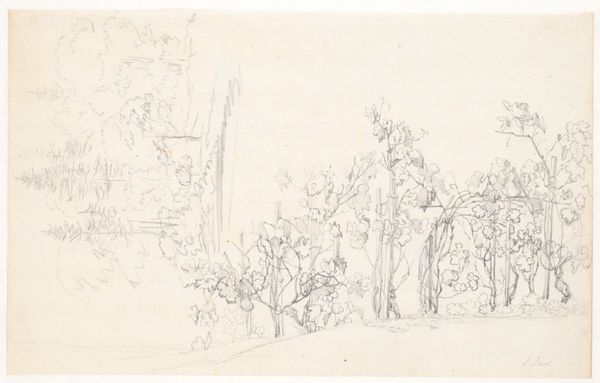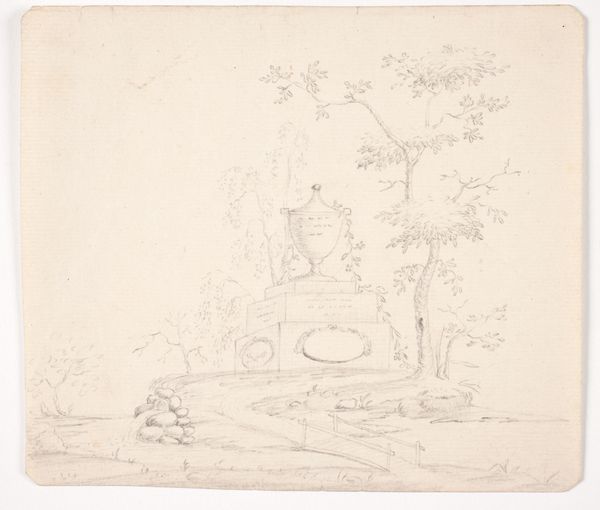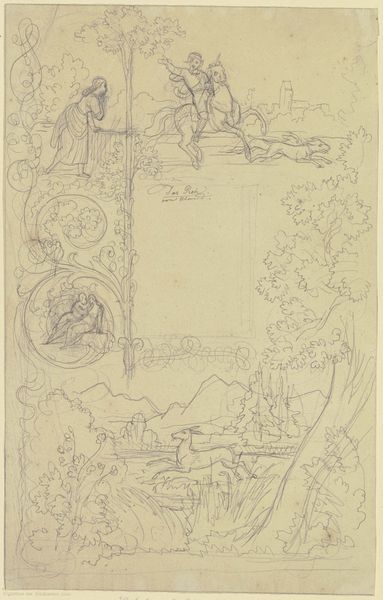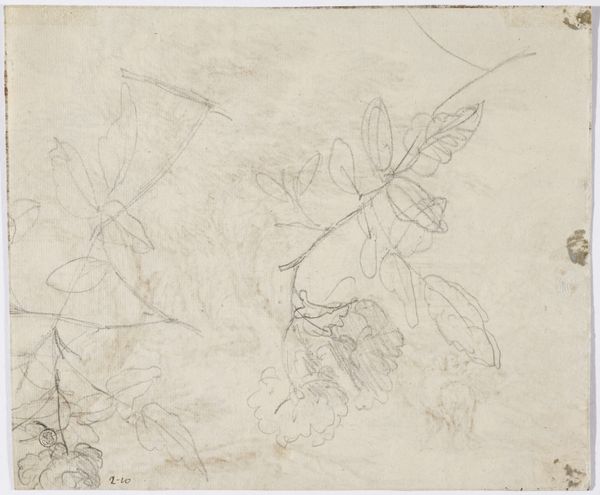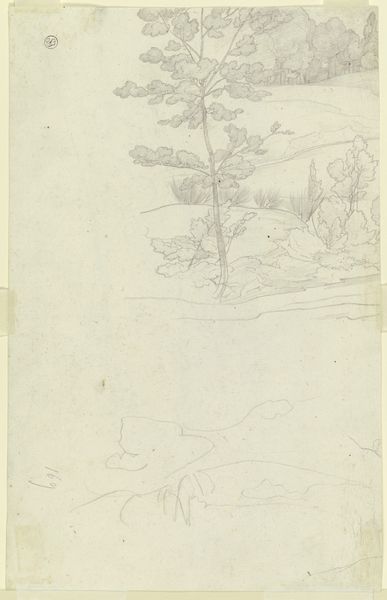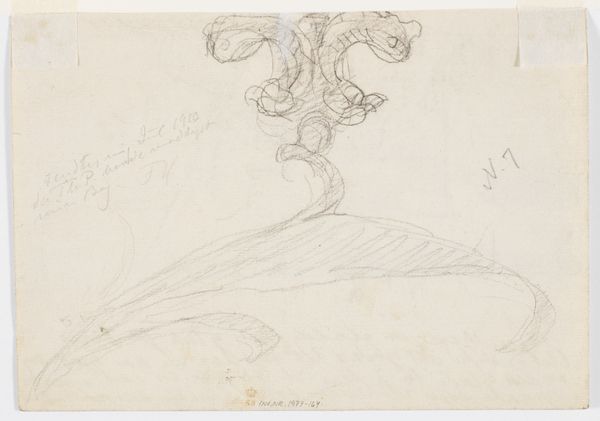
drawing, pencil
#
drawing
#
pencil sketch
#
landscape
#
classical-realism
#
pencil
#
academic-art
Dimensions: sheet: 21.27 × 26.04 cm (8 3/8 × 10 1/4 in.)
Copyright: National Gallery of Art: CC0 1.0
Curator: Looking at this pencil sketch, Emanuel Leutze, famed for his iconic depiction of Washington Crossing the Delaware, gives us something more intimate, more preparatory. This is his "Studies of Fountain Decorations" dating from the 1850s. Editor: It’s so delicate, almost ephemeral. You can practically feel the pencil gliding across the paper, capturing these fleeting ideas. It makes me wonder about the function of art in the lives of ordinary people. Fountains were, and are, a sort of democratic luxury, accessible to all who live nearby, right? Curator: Precisely. The mid-19th century saw burgeoning civic pride in cities both in Europe and America. Public spaces became showcases for art, designed to elevate the collective experience. A project like fountain decorations would enhance urban life. Editor: The male figure on a pedestal—is that meant to be a classical allusion? A deliberate harkening back to a golden age that, well, never truly existed for most? It begs questions of whose history gets valorized. Curator: I see it as part of a broader 19th-century impulse to connect with European artistic traditions while simultaneously forging a uniquely American identity. This interest is not so much to reinforce an established narrative, but rather to integrate itself into a history. These fountains would be a synthesis of European elegance and American optimism. Editor: Even though this is a rough sketch, it's still pretty clear that whoever enjoyed these fountains had the leisure time to visit public spaces and reflect upon imagery of power and status. Do we really democratize culture by offering aesthetic uplift for all, or by addressing systemic issues? How much are we shaped by this “official art?” Curator: These are significant points, particularly when considering the role public art can, and perhaps should, play in critiquing existing power structures and fostering wider dialogue. This sketch is also evidence that these debates go back further than one would expect, when observing 19th century imagery. Editor: Right! I can also appreciate seeing the raw, formative process here. Curator: It really is about envisioning the transformative power of civic design, offering opportunities for everyone to be elevated through beauty, even if just momentarily. I'm just thankful this has been preserved. Editor: Absolutely. It's a testament to the artist's intention. The sketch feels very earnest somehow.
Comments
No comments
Be the first to comment and join the conversation on the ultimate creative platform.
